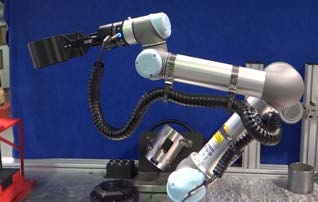SRNL Support to NA-23 In FY23
Savannah River National Laboratory
Programs and Partnerships to Minimize the Need, Presence and Production of Weapons-usable Nuclear Material
SRNL delivers integral support to the NNSA Office of Material Management and Minimization (M3) mission by leading key programs related to HEU (high enriched uranium) and plutonium minimization. SRNL, through research, innovation, and technology deployment, supports M3 initiatives in research reactor conversion, fissile material removal, and fissile material disposition designed to minimize the need for, the presence of, and the production of weapons-usable nuclear material around the world.
SRNL supports the M3 mission activities by:
- Leading irradiated HEU and separated plutonium removal programs including the Gap program and foreign research reactor spent fuel return programs.
- Jointly leading NNSA’s new PRO-X initiative to enhance proliferation resistance frameworks for research reactor and other nuclear systems.
- Innovating and developing novel, agile nuclear material processing technologies and systems including mobile, modular platforms including:
- Mobile Plutonium Facility (MPF) for rapid recovery of plutonium materials.
- Mobile Melt Consolidate (MMC) technology for minimization of HEU materials through melt processing.
- Developing and applying new technologies supporting NNSA’s Sur-plus Plutonium Disposition (SPD) program that helps to improve safety, lifecycle cost/schedule and reduce worker dose.
- Developing and leading cross-cutting technologies necessary for the conversion of HEU-fueled research reactor to LEU (low enriched uranium) fuel and for the conversion of Mo-99 production facilities to LEU targets.
Key Accomplishments and Associated Impacts
Mobile Plutonium Facility (MPF) – Dark Sleeper
- SRNL successfully readied and deployed the MPF and successfully completed the NNSA/NA-20-led, multi-agency Dark Sleeper Exercise in the United Kingdom culminating in demonstrations for senior U.S. and U.K. government officials.
- The team successfully completed the first use of the MPF’s new Non-destructive Assay Module.

Dark Sleeper Exercise Team.
Mobile Melt Consolidate (MMC) Technology
SRNL supports NNSA/NA-23 by leading a collaboration with the Institute for Energy Technology (IFE) in Norway to eliminate all HEU using SRNL developed MMC technology and to make Norway the 34th country to be HEU free.
- SRNL led the R&D to enable application of MMC technology for the in-country disposition of HEU-Th materials.
- SRNL led collaboration with Norway to develop a small-scale capability for demonstration of melt-treatment of irradiated and unirradiated fuel materials.
- SRNL completed development of a first-of-kind MMC system for deployment in Norway; SRNL is also positioned to initiate development of a second generation MMC system.
- The SRNL and IFE technical team are collaborating to develop the technical basis and documentation for necessary approval by the regulatory authorities.

U.S. DOE and Norway Agreement on HEU Minimization using SRNL MMC.

MMC Treatment Modules.
U.S. High Performance Research Reactors (USHPRR) Con-version Program
For the conversion to low enriched uranium (LEU) fuel from high enriched uranium fuel for five U.S. high performance research reactors, SRNL is the Cross-cutting Pillar Lead supporting the fabrication, qualification, and conversion pillars. SRNL staff chair the Fuel Fabrication Pillar Independent Technical Review Committee, develop scrap recover solutions and technologies to address gaps for LEU scrap recovery and recycle, analyze effective back-end fuel cycle solutions for conversion fuels, and integrate packaging and transportation needs to ensure container and facility readiness when LEU fuel is shipped.

Movement of BRR (BEA Research Reactor) cask for spent fuel.
Proliferation Resistance Optimization (PRO-X)
SRNL jointly leads NNSA/NA-23 initiative to develop the framework for enhanced proliferation resistance of new build research reactors (RR) and other nuclear systems.
- Investigating introduction of intrinsic and extrinsic design characteristics in RR.
- Working with IAEA to develop international consensus on best practices for proliferation resistance of research reactors through multiple consultancy and technical meetings.
- Driving a multination-al team of experts in the development of an IAEA TECDOC.
- Working bilaterally with Argentina (INVAP), Nigeria (NAEC), and other countries with new RR build plans.



Strategic Laboratory Assessment Program
SRNL co-leads with Oak Ridge National Laboratory, the Strategic Laboratory Assessment (SLA) Program designed to identify and explore opportunities to accelerate disposition; to reduce lifecycle costs, program risks and worker radiation exposure; and to improve worker safety through innovation and technology while enhancing the scientific and technical basis for the SPD program. The SLA program delivers innovation in the following areas:
- Provides dose modeling & simulation analysis products (radiation maps, shielding designs, dose assessments, etc.) to aid in dose prediction and operational planning, and developing, applying, and deploying a flexible and ex-tensible state-of-the-art computational tool set.
- Advances non-destructive measurement technologies to im-prove uncertainties and accuracy of process and analytical measurements.
- Explores automation technologies for glovebox processing to reduce worker radiation dose, increase process throughout, and reduce overall cost through development and transition to automated unit operations for the processing of Pu oxide.
- Identifies equipment and technology options that could improve availability and reliability, and reduce worker dose for the SPD process through active monitoring of Pu holdup in the gloveboxes and ventilation systems.
- Develops strategic software Prototype of automated can loading aimed to step outside the bounds system for glovebox of glovebox processing to provide improved efficiencies throughout the Pu disposition processing, that reduces worker radiation dose, increases process throughput, and reduces overall cost.

Prototype of automated can loading system for glovebox

Prototype of automated can loading system for glovebox.
Global HEU and Separated Plutonium Minimization
SRNL leads the irradiated HEU and separated plutonium minimization pro-grams for NNSA/NA-23. SRNL has helped eliminate HEU and plutonium from more than 100 nuclear weapons worldwide, innovate packaging tech-niques and non-destructive assay strategies for testing and deployment in Japan, and support the IAEA to sustain its critical safeguards sampling mission around the world.
SRNL helped remove HEU and separate plutonium from an additional two weapons from Asia and Europe. Notable removal campaigns include the removal of slightly irradiated HEU from Japan and removal of separated plutonium from IAEA, Austria.